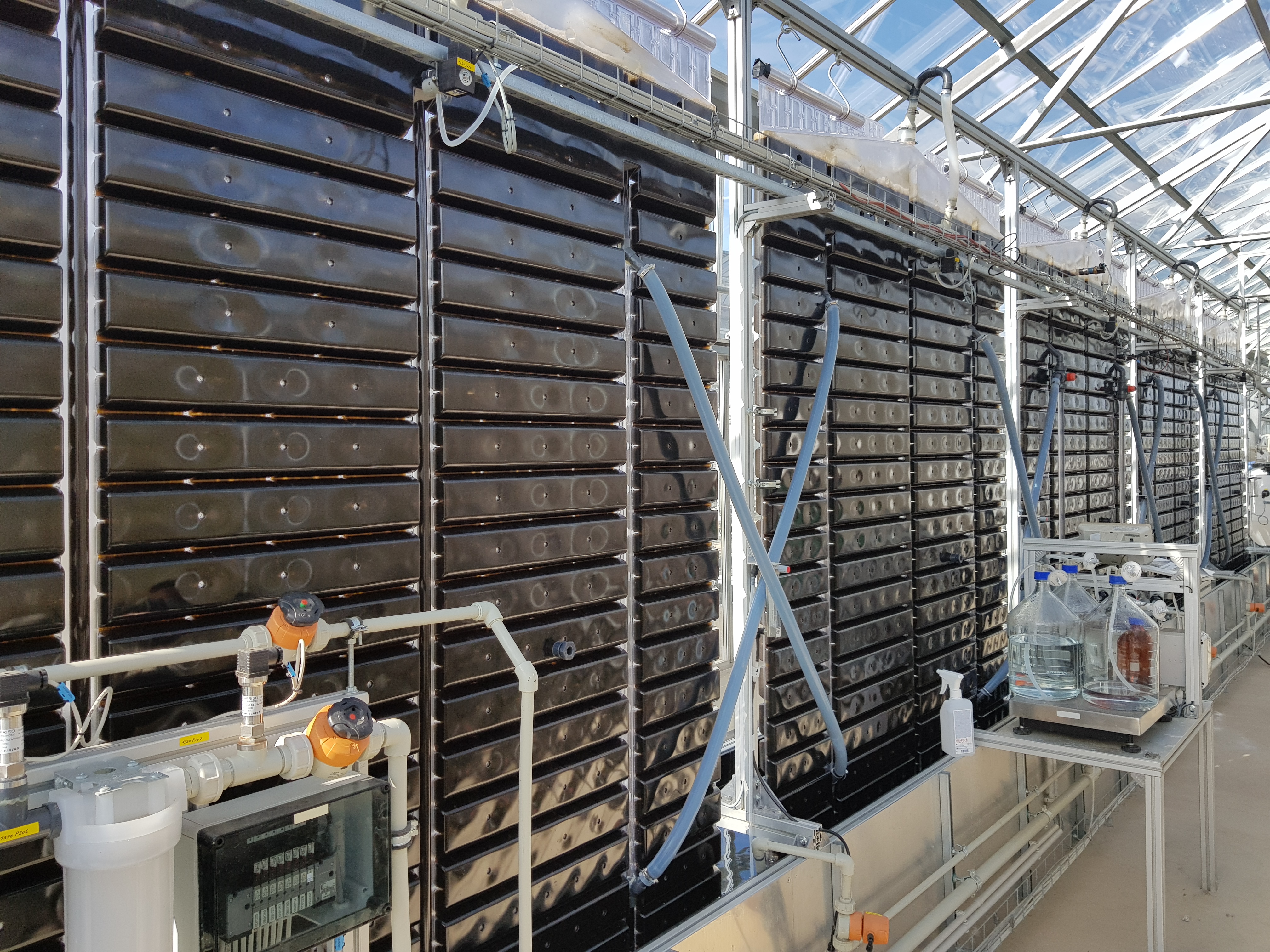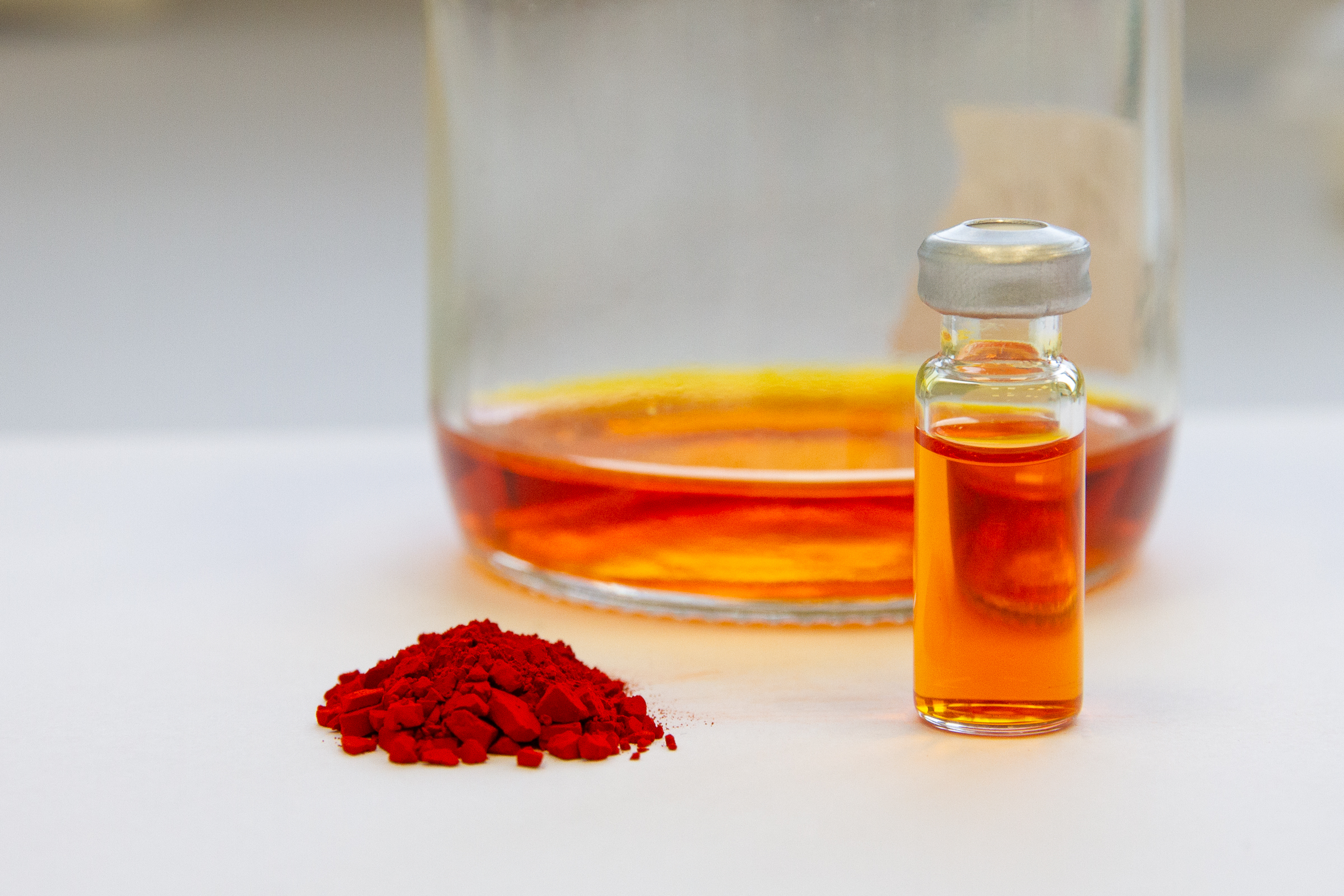Main navigation
Microalgae - high-quality products for domestic agriculture?
Algae are aquatic organisms that flourish in a huge variety of species. But that's not all: they are also small green mini-factories that can produce all kinds of valuable materials such as food or plastics. All they need is water, light, CO2 and a few nutrients that can be recycled from biogas or sewage treatment plants. Researchers have now determined the optimal framework conditions and practicability of process methods for agricultural algae cultivation - with some surprising results.
FuTuReS (Fucoxanthin Production with Microalgae: Transdisciplinary and Regional Scenarios) is the name of a project that ran from 2019 to May 2022 in which researchers from the Fraunhofer Institute for Interfacial Engineering and Biotechnology IGB in Stuttgart, the University of Hohenheim and the Karlsruhe Institute of Technology (KIT) jointly investigated the potential of microalgae. To be precise, they investigated under what conditions and for what purposes microalgae cultivation would be worthwhile, offering an innovative perspective for agriculture in Germany and a sustainable new source of biomass for consumers.
Valuable materials can be made to measure
The experts' focus is on Phaeodactylum tricornutum, a diatom that can be cultivated effectively under Central European climatic conditions. There is currently a great deal of interest in microalgae, as they are extraordinarily versatile organisms with great application potential, while at the same time being frugal and comparatively easy to cultivate from a biotechnological perspective. Effective and sustainable agricultural algae production could conserve fossil resources and provide us with food and further valuable biomass.

These photoautotrophic organisms only need water, CO2, light and inorganic nutrients to produce ingredients for biofuels or plastics, food, feed or pharmaceuticals and cosmetics. P. tricornutum is no exception: "Algal biomass production changes depending on which conditions you choose. Biomass production can thus be tailored to specific applications. The product spectrum ranges from fucoxanthin and eicosapentaenoic acid, or EPA for short, to neutral lipids and proteins," says Konstantin Frick, algae biotechnologist at the Fraunhofer IGB. "We don't even have to add the nutrients - nitrogen or phosphorus to give two examples - that the algae need for growth. Instead, we can recycle them from side streams, such as filtrate water from biogas plants. That could make algae interesting for agriculture."
Development of a decentralised approach to algae cultivation
In the FuTuReS project, the researchers focused primarily on the following products: the red pigment fucoxanthin, a carotenoid, and the unsaturated omega-3 fatty acid EPA. Both substances have health-promoting, antioxidant properties, which is why there is a huge amount of interest in obtaining these extracts. Fatty acids are basic materials in the production of bioplastics or textiles, and pigments are in wide demand in the food industry as colouring agents.
Fraunhofer IGB's part in the project consisted of cultivating the algae and developing the technology, which are the first steps in the value chain for customised biomass: "The process had already been developed in the laboratory. In FuTuReS, we investigated various aspects in greater depth, e.g. the processing, the automation of the process and control of the cultivation parameters," explains Frick. "In addition, the project evaluated a large number of experiments that were carried out at our pilot plant in Leuna. Up to now, fatty acids, for example, have been produced in relatively large plants. However, our approach should also be applicable in a decentralised manner, for example in order to be able to use the filtrate water from biogas plants."
Artificial light as the most important aspect in addition to selecting the right recyclables
The enormous amount of data generated was then evaluated from an economic and ecological viewpoint in the Department of Renewable Resources in the Bioeconomy at the University of Hohenheim. Light was found to be one of the factors that influenced the profitability of the process. The availability of light and nutrients had already been proven to be the most important parameters for the composition of the biomass. However, algae cultivation relies not only on sunlight, but also on artificial light. For the first time, the researchers have now evaluated different cultivation scenarios on an industrial scale using sunlight in greenhouses and artificial lighting in closed rooms.

The result was surprising: "Artificial light proved to be one of the most important parameters in the entire process, and had significant advantages over sunlight. Although this pushes up the electricity costs, the process is much more efficient as it is more productive, stable and predictable - it also requires less space and uses less water - despite the predicted price increase due to the energy crisis that we had already factored in," says Sebastian Weickert, project manager at the University of Hohenheim. "The increased biomass yield from 14 to 123 tonnes per hectare compensates for the 50% cost increase of artificial lighting. We believe that this disadvantage could be offset by the appropriate electricity mix and the use of regenerative energy. And in fact, the production costs of a kilogramme of biomass can thus be reduced by as much as 70 percent."
Nevertheless, because energy drives up the cost, the process is only worthwhile when it leads to high-priced products. This is not the case for soluble proteins, for example, which could also be obtained from biomass, but are currently cheaply available worldwide. So if the right products are chosen, algae cultivation could be a thoroughly profitable business model. The researchers have therefore created their own data pool for generating real scenarios when required: "This is one of the great results of the project," says Weickert. "Our model is so unique that we can calculate everything in a very short time and also adapt it whenever we need to."
FuTuReS is already the basis for two further projects
In addition, KIT, the third project partner, conducted analyses on the general acceptance of algae cultivation. One of the results: "Farmers basically have an open mind but point to a need for further research and funding," says Dr. Christine Rösch, head of the Sustainable Bioeconomy Research Group at KIT. "Based on the participatory processes with stakeholders, we have developed scenarios as to how microalgae could be integrated into agricultural production cycles in the future, and derived recommendations for action to develop the business field, such as acknowledging the environmental benefits of microalgae."
However, the end of the project period and the knowledge gained does not signal the end for the researchers, quite the opposite: "At the IGB, we are now looking at each individual process again to see what we can still adapt," says Frick. And Weickert adds: "Our model already serves as the basis for two new projects. One is the development of an algae-based, ecological plant fortifier - chrysolaminarin - against fungal infestation in organic viticulture as an alternative to copper preparations that accumulate in the soil over time. This would be a good complement for the profitable production of fucoxanthin and EPA, because viticulture is seasonal, and one could then concentrate on the other products for the rest of the year. We are currently developing scenarios for this and making corrections to the model."
Info box:
FuTuReS (Fucoxanthin Production with Microalgae: Transdisciplinary and Regional Scenarios) entitled: "Economic and ecological evaluation of a biorefinery approach for the production of fucoxanthin and EPA on a pilot scale and transdisciplinary developed scenarios on an industrial scale in Germany".
Project duration: October 2019 – May 2022
Partners:
- Fraunhofer Institute for Interfacial Engineering and Biotechnology IGB (coordination),
- University of Hohenheim, Department of Renewable Resources in the Bioeconomy,
- Karlsruhe Institute of Technology (KIT), Institute for Technology Assessment and Systems Analysis (ITAS), Sustainable Bioeconomy Research Group.
The project is funded by the German Ministry of Food and Agriculture (BMEL) and the Agency for Renewable Resources (FNR).